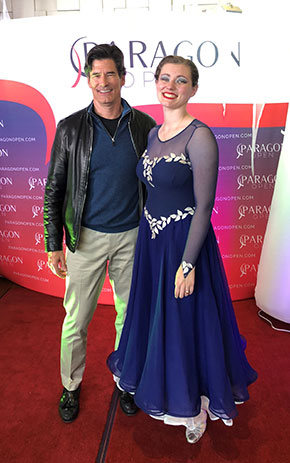Our Story

When Jan and Garet’s youngest daughter was 10 years old, her kidneys suddenly failed. After the biopsy, they learned that she would never recover her kidney function.
They were in shock and quickly learned that a living donor transplant was her best option. Both Jan and their oldest daughter, Brooke, were tested and ruled out as potential donors because they were blood type incompatible. Garet was blood type compatible, so he was worked up for donation. The transplant surgery was scheduled for a Thursday in the middle of May.
That Monday, they received a call from the transplant center letting them know there was a problem and they needed to return to the transplant center and do another crossmatch test immediately. They took the additional test and waited.
Late Tuesday, 36 hours prior to surgery, they received another call from the transplant center. Garet had failed the crossmatch test again. Surgery was canceled. Garet could not donate because their daughter would likely reject Garet’s kidney because she had developed a strong antibody against his B60 antigen as a result of a prior blood transfusion.
The following week, an anonymous donor surfaced who, after another trip to the hospital and another crossmatch test, was determined to be incompatible and failed the same crossmatch test that Garet had failed. In the weeks that followed, all of the uncles that were initially tested failed subsequent crossmatch tests. They had gone from seven donors to zero.
This was a dark time for the Hil family. In response to this, they worked around the clock to contact and test additional donors. They also attempted to enter every kidney exchange program in the United States. None of these paired exchange programs were able to find a match for their daughter. Several programs did not return phone calls and some of them wanted to force the Hils to switch to far away hospitals for transplant surgery just to enter these exchange programs.
In the end, paired exchange proved unsuccessful and after screening over a dozen potential direct donors, they found one who was compatible and could donate—their daughter’s 23-year-old cousin. He cleared all the hurdles, was an excellent match, and is an incredible person.
The Hils’ daughter received her new kidney on July 12, 2007. Both she and her cousin are doing well. Garet went on to donate his kidney through the NKR’s Advanced Donation Program (now called the Voucher Program) to allow his daughter to receive a second transplant in the unlikely event that she should ever need one. The Hils’ primary focus now is helping other families who face the same problem.
The Hils’ transplant-related challenges are behind them now, but there are thousands of people who face these same challenges every year. As they struggled through the complex and difficult process of finding a compatible donor, it was clear that there was a better way. If all incompatible donors and recipients were simply listed in one common pool and modern computer technology was used to find matches, the problems related to incompatible donors would be a thing of the past. The National Kidney Registry was founded to make this vision a reality.